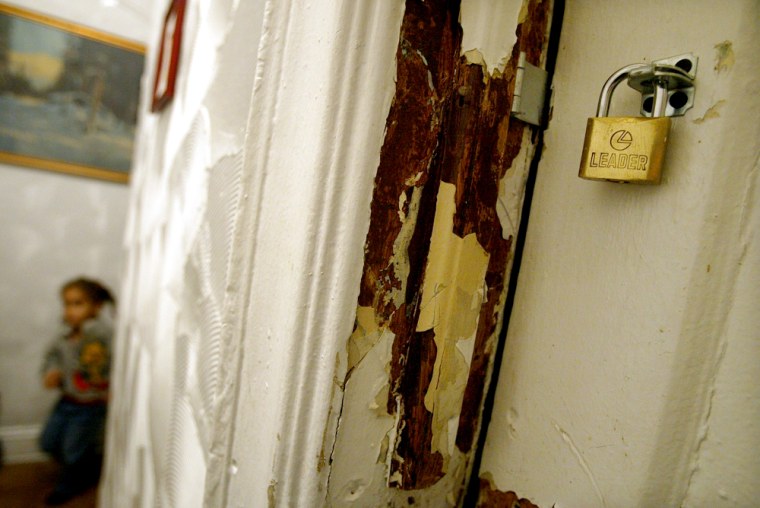Lead exposure may sound like an old-fashioned health threat, like polio or scurvy. But getting a dangerous dose is more common today than you realize — thanks to sources you'd never expect, such as ceramic dishes, art supplies, and even vegetables grown in city gardens. And although average blood lead levels are way down, new research shows that even low amounts can be harmful, says Ellen Silbergeld, PhD, a professor of environmental health sciences at Johns Hopkins University.
Just 4 ug/dl (micrograms per deciliter) can double your risk of a fatal heart attack or stroke, and similar levels may also cause memory loss, says Eliseo Guallar, MD, PhD, an epidemiologist at Johns Hopkins.
Here are seven hidden risks — and simple fixes to protect you and your family.
Brass faucets
Homes built before 1986, when a law largely banned the use of lead in plumbing materials, are more likely to have lead pipes, fixtures, and solder. However, new homes are also at risk because the law still allows plumbing labeled lead free to contain up to 8 percent of the metal. The most common problem: brass or chrome-plated faucets and fixtures, which can leach lead.
Protect yourself: Test your water with a home kit (leadtesting.org). If the result is above 15 ug/l (15 ppb), run the tap for 30 seconds first thing in the morning and when you get home at night to clear any lead buildup. Cook with cold water and consider using a filter approved by NSF, a nonprofit certification organization, says Veronica Blette, special assistant to the director, EPA Office of Ground Water and Drinking Water.
Weak bones
When you consume lead, it's stored in your bones — but because new bone tissue is constantly replacing old, lead cycles into and out of your blood, says Kim Dietrich, PhD, a professor of environmental health at the University of Cincinnati College of Medicine. More lead is released during times of high bone turnover: after a fracture, during pregnancy, or at menopause. Studies have linked the rise in blood lead levels in postmenopausal women to high blood pressure and kidney problems.
Protect yourself: Maintain bone mass to keep lead locked in and out of your bloodstream. Menopausal women should get 1,200 mg of calcium and up to 1,000 IU of vitamin D daily. Avoid calcium supplements made from bone, shellfish, or dolomite, which may contain high levels of the metal. Instead, look for supplements labeled USP-grade, which means they're lead free.
Renovations
"If you're remodeling a home built before 1978, you should assume you're dealing with lead paint," says Dietrich. "Even if you're not renovating, an older home may be contaminated by metal-laced dust from deteriorating paint."

Protect yourself: During construction, seal off the work area by closing windows and vents, and have builders enter and exit through a side door; afterward, do a thorough cleanup. If you worry that you have flaking lead paint, hire a certified tester (800-424-5323) to do a risk assessment. If lead is found, hire a professional removal service: Getting rid of it requires major scraping and sanding.
Ceramic dishes
Recently, two large dishware companies each recalled a pattern due to high lead counts. Some experts caution against eating off older plates (from the '60s or before) or handmade ceramics.
Protect yourself: Test your everyday dishes with a lead test kit. Until you're in the clear, microwave in glass rather than ceramics, because heat can increase lead leaching. When buying new dishes, ask the store manager if the products are lead free or call the manufacturer, suggests John M. Balbus, MD, chief health scientist at the Environmental Defense Fund. The company should guarantee they meet California standards, which are more stringent than the FDA's requirements. And if you bought plates while vacationing in other countries, consider them just decorative until you've tested them.
City gardens
Gardens in many urban areas have high levels of lead thanks in part to paint chips from old homes that have contaminated the soil.
Protect yourself: Gardening in the city is safe, as long as you take precautions. Wear gloves and keep gardening shoes outside to avoid tracking in dirt. The vegetables you grow may have lead on their surfaces, so wash them thoroughly; toss outer leaves of leafy crops and peel root vegetables. Maintain soil pH levels above 6.5 — that makes veggies less likely to take up the metal. Add compost or topsoil to dilute the dirt and neutralize lead.
Hunting or fishing
Bullets used in hunting rifles can distribute lead fragments throughout the animal's body and make the meat unsafe to eat, says Mark Pokras, DVM, an associate professor at Tufts University Cummings School of Veterinary Medicine. Fishers come in contact with metal dust and salts via sinkers and lures.
Protect yourself: Hunters should clean and leave their gear outside. Go to barnesbullets.com for lead-free ammo, and find places to buy safe fishing supplies at prevention.com/links. If you're sticking with lead sinkers, either wear gloves when handling or wash hands thoroughly, especially before downing a sandwich on the boat.
Art supplies
Some oil and acrylic paints contain lead to give colors luster and brightness, says Pokras: It's common in oranges, reds, blues, and greens. Some clays also contain heavy metals, but shiny glazes are the biggest pottery-related risk. Several state health departments have also issued warnings about paint-your-own-pottery studios using glazes with high levels of lead.
Protect yourself: Check labels for lead-free paints and glazes, and make sure you work in a well-ventilated area. Potters should keep clay wet to minimize dust. If you frequent a paint-your-own studio, ask the staff if they use lead-free glazes — and find another store if they don't.